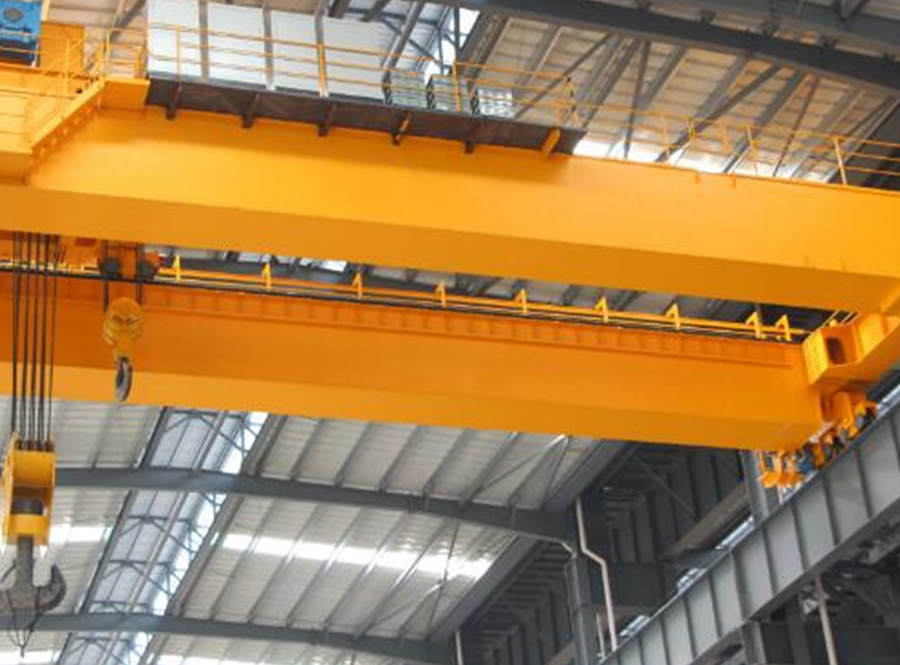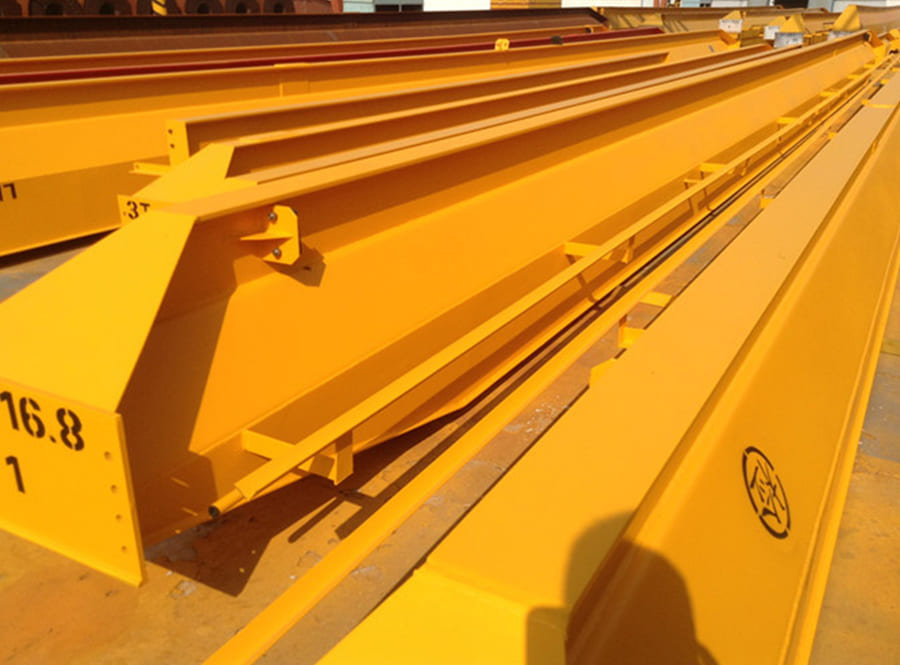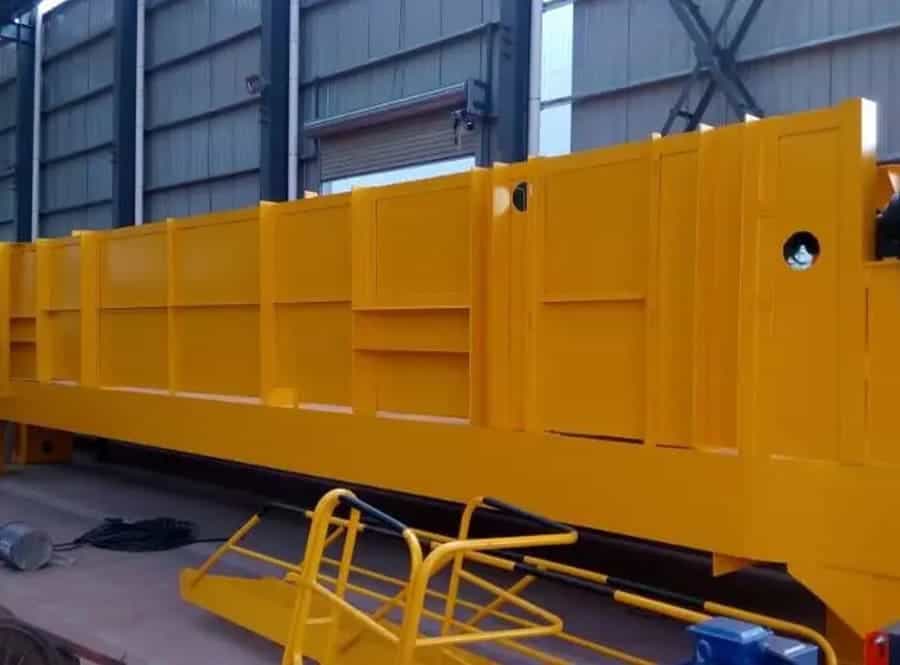The use of Overhead bridge crane for sale not only improves production efficiency, but also reduces workers’ labor intensity. However, we are very concerned about the safety of the equipment during use. As the types of equipment increase and the scope of applications expands, the safe operation of overhead cranes is crucial.

Inspection of important components of overhead hoist i beam
Always check key components such as hooks, ropes and gear before starting work. If any abnormalities are found, they should be resolved immediately to avoid affecting normal work. Operators can turn off the main power while ensuring that no one is on the stage and track. If a circuit breaker is locked or has a notification card, personnel can turn off the main power.
During the work process, before starting the machine for each operation, lift the heavy object 0.5 meters off the ground, and lower the heavy object again to check whether the brakes are working properly. After confirming that the brakes are normal, normal operations can be carried out.
Ten principles of not lifting bridge cranes
During work, you must strictly abide by the operating procedures of the bridge crane and follow the following ten principles of not lifting:
(1) Do not hoist when the command signal is unclear.
(2) Do not lift when the rated weight is exceeded.
(3) Do not lift when the spreader is not firmly tied.
(4) Do not lift objects when there are people on them.
(5) Do not lift when the braking device fails.
(6) Do not lift the heavy objects hung by the crane when they are directly processed.
(7) Do not hang it if it is placed diagonally or pulled crookedly.
(8) Do not hoist explosive items.
(9) Do not hang items buried underground.
(10) Do not lift heavy objects with sharp corners.
During the transportation of items, if any abnormality occurs, the machine should be stopped immediately, the power should be cut off, inspection should be carried out, and it should be restarted after returning to normal.

Operation of bridge gantry cranes at the end of work
After the work is completed, the following steps must be carried out in accordance with the operating procedures of the bridge crane: first lift the hook to a certain height, then park the large vehicle at the designated location, place the handle of the controller in the zero position, pull down the knife door and cut off the power supply . In addition, routine maintenance and handover work must be performed.
Precautions for safe operation of bridge cranes
Smooth operation of overhead cranes
When operating a bridge crane, you should maintain smooth and slow movements and avoid lifting or moving objects suddenly and quickly. Before lifting an object, be sure to tighten the spreader and check whether it is loose to prevent the object from swinging when the lifting begins. Make the equipment perpendicular to the lifting rope and avoid diagonally pulling the equipment.
Operating a bridge crane in no man’s land
During the lifting process, it is necessary to ensure that there are no people in the nearby area, and at the same time, overloading, objects moving too fast, and improper movement are prohibited. Never lift objects empty at any time unless there is a problem with the control power supply. Keep objects as close to the ground as possible to avoid danger from sudden falls. Operators are not allowed to leave the crane’s control area at will.
Four major safety accidents of bridge cranes
Impact damage caused by falling heavy objects from hoisting
If the components of the crane lifting mechanism fail or are damaged, the suspended heavy objects may suddenly fall, which may cause serious injuries. To avoid such accidents, operators should frequently check the crane’s lifting mechanism and related components and ensure that they are in good working order. During the hoisting process, appropriate hoists must be used and their structures must be strong and reliable to withstand the weight of heavy objects.
Crane rolls over
A crane rollover is a serious safety incident that can cause the crane to overturn or tip over. To avoid such accidents, operators must operate the crane correctly and follow predetermined work procedures and safety regulations. During operation, attention should be paid to the stability of the crane, avoid overloading, avoid sudden movements or sudden braking, and avoid operating on unstable ground.
Spreader broken
The spreader is an important part of the crane and is used to connect the crane and the lifted object. If the spreader breaks, it may cause the lifted object to fall, causing injury or damage. In order to ensure the safety of the spreader, operators should frequently check the wear, corrosion and fatigue of the spreader, and promptly replace seriously worn or defective spreaders.
Electrical faults and fires
A crane’s electrical system can malfunction, causing the underhung bridge crane to lose control or cause a fire. To prevent electrical faults and fires, operators should frequently check the connections, insulation, and grounding of electrical systems and ensure that electrical equipment meets safety standards. In addition, the electrical equipment of the crane should be inspected and maintained regularly to ensure its normal operation and safety.
To summarize, to ensure safe operation of overhead cranes, operators should always follow operating procedures and precautions. Check important components, follow the ten principles of not lifting, operate the crane smoothly, ensure that no one is around the area, pay attention to the safety of spreaders and electrical equipment, and perform maintenance and repairs in a timely manner. Through these measures, the safety of bridge cranes can be improved and the occurrence of accidents can be reduced.




















